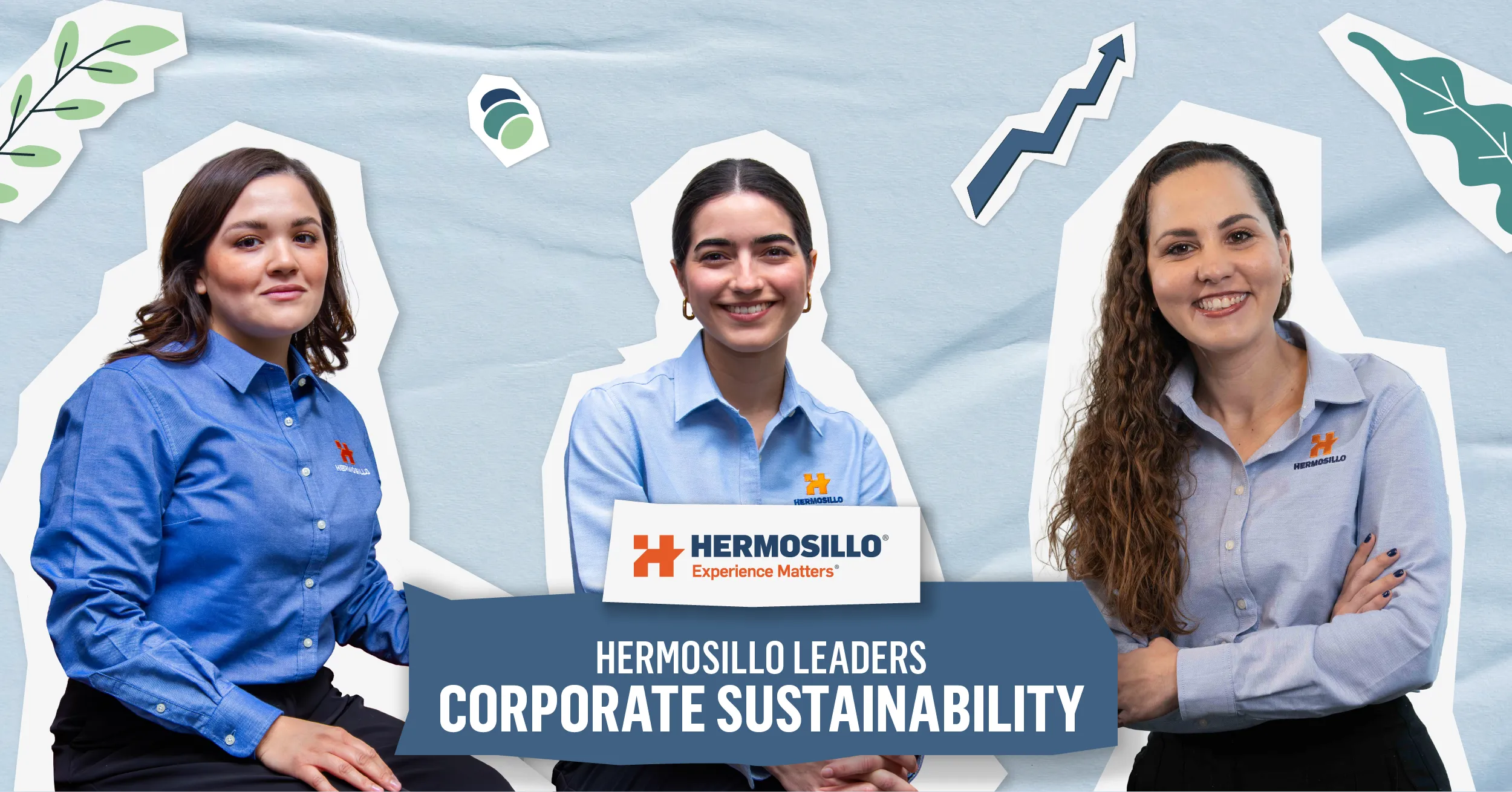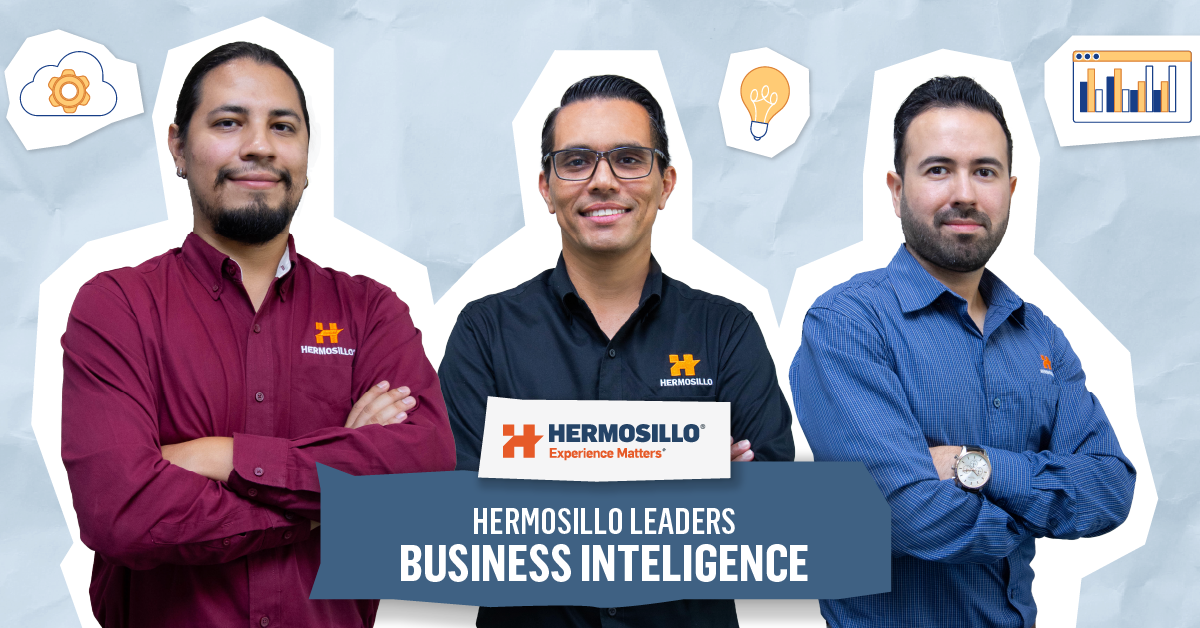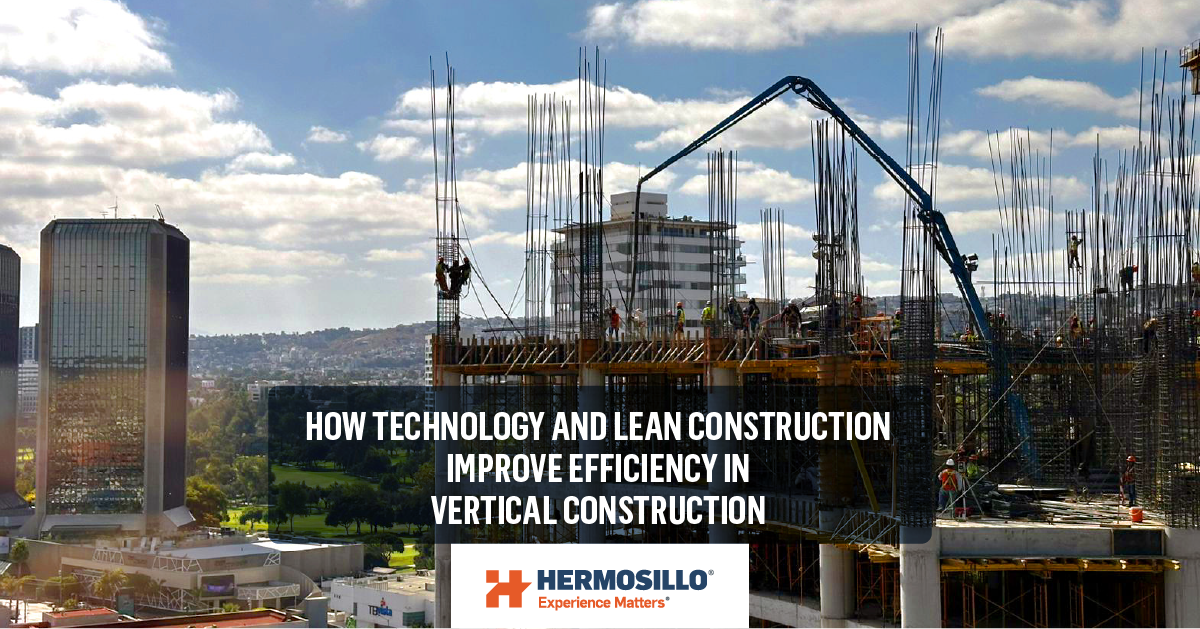
At Hermosillo, sustainability is not just a commitment but a key strategy for building a more efficient, innovative, and responsible future. To learn more about how we integrate these values into our projects, we spoke with the Corporate Sustainability team, which is composed of Daniela Alvarez, Fernanda Acero, and Marianne de la Torre.
Through this interview, you will discover how they work to optimize processes, reduce environmental impact, and foster an organizational culture aligned with sustainability. You will also learn about the challenges they face, the solutions they have implemented, and the vision that guides their efforts in every project.
Keep reading to get an inside look at how this team adds value to each project, ensuring that sustainability is not just an ideal but a daily practice at Hermosillo.
How was the Corporate Sustainability department created?
Daniela: The Corporate Sustainability department was born from our partners’ genuine intention to do things better. This vision perfectly aligned with our clients’ interests, as they were not only looking to develop sustainable projects but also to work with strategic partners in their value chain who prioritized sustainability.
Why is it important for companies to have a Sustainability department?
Daniela: Companies must embrace a sustainability-driven culture, operating responsibly with their environment and community while contributing to overall well-being. At Hermosillo, we have always said that doing things correctly is an excellent business strategy, making operations more profitable. Having a Sustainability department helps foster and consolidate this culture within the company.
Fernanda: Today, having a Sustainability department allows companies to take responsibility for their shareholders, employees, clients, communities, and the environment—something that has always been clear and deeply embedded in Hermosillo’s culture. This department ensures that operations are responsible and ethical and positions sustainability as a valuable business strategy.
Additionally, it helps companies adapt to market demands, responding to the requirements of clients, investors, and other stakeholders. It also fosters innovation, reduces risks, optimizes resources, and strengthens a company’s reputation, positioning it as a key player committed to a sustainable and equitable future.
Marianne: Having a specialized Corporate Sustainability department ensures that executives and employees understand and actively participate in the movement by implementing actions and initiatives that contribute positively to the Sustainable Development Goals (SDGs) on a global scale.
How would you describe your contribution to Hermosillo’s design and construction projects from a sustainability perspective?
Daniela: Although we are just getting started, I believe we have sparked our employees’ interest in seeking innovative project solutions. I also see two specific ways in which we have contributed. The first is that many clients seek certifications, and we are continuously working to make that process more accessible and less complex for our teams. The second is that we have made an effort to share with the rest of Hermosillo the sustainability initiatives that some of our employees have implemented in their projects to inspire others to replicate or adapt these solutions.
Fernanda: Part of our contribution is supporting and aligning teams in sustainability language and strategies. Each department is an expert in its area, and we are here to provide support, answer questions, and ensure they have the necessary resources to integrate these practices.
We also conduct ongoing research to stay at the forefront of sustainability trends and be prepared to meet our clients’ requirements. Essentially, our role in projects is to facilitate the path to optimal results. In construction, we support the implementation of certification strategies and sustainability initiatives that Hermosillo has established as a priority.
Marianne: At this early stage of the department, we have focused on providing employees with a broader understanding of our organizational reach and reporting our current sustainability status.
We aim to establish solid foundations to ensure that our projects are not only efficient and cost-effective in terms of time, expenses, and quality but also act as a driving force for innovation. We want the experience of working with Hermosillo to mean integrating sustainable strategies as part of our culture and value proposition.
What actions are being implemented to make projects more sustainable?
Daniela: For now, and especially in 2025, we will focus on three key objectives: managing waste responsibly, reducing potable water consumption, and decreasing air pollution caused by our operations. These objectives have been part of our Greenbook for a year, but we will now begin monitoring the strategies outlined in it through KPIs to assess whether we are genuinely progressing.
Fernanda: Building on what Daniela mentioned, one of the key actions we implement is the continuous improvement of our construction practices. We recognize the significant environmental impact of our industry. While some decisions are ultimately up to the client, we focus on the aspects we can control—such as construction—by implementing responsible strategies that reduce this impact. Additionally, at Hermosillo, some of these strategies are already mandatory, reinforcing our commitment to sustainability.
Marianne: Our company’s sustainability goals are clear, but in 2025, our main challenge as a department will be collecting, classifying, and visualizing relevant metrics to track the progress of key sustainability actions. By analyzing these data trends, we can proactively adjust and, if necessary, redefine our commitments to sustainability—always focusing on innovative and efficient operational processes.
Can you share examples of sustainable solutions or strategies that have optimized costs or reduced project risks?
Daniela: I’d like to mention a case that, honestly, did not originate from our department but rather from the project teams themselves, and we are very proud of their achievement. In a project in Lerma, they implemented a system called PRS-Neoloy, which helped reduce transportation needs, decrease water consumption, and lower CO₂ emissions.
Fernanda: Another example is a project where our colleagues took the initiative to achieve zero waste. After assessing cement waste, they designed and created molds to repurpose it into concrete blocks. These blocks were then donated to the community, which reduced environmental impact, optimized costs, and mitigated risks associated with waste management, benefiting both the environment and the local community.
How do you collaborate with the design, engineering, and construction teams to integrate sustainability objectives?
Daniela: For now, our collaboration is cross-functional. Together, we work toward sustainable solutions, combining our expertise in theory with their hands-on experience, which creates excellent synergy. Additionally, we strive to be a key support when clients pursue green infrastructure certifications, such as LEED, or compliance with ESG standards.
Fernanda: From the start, we provide support so that clients understand what we do, our achievements, sustainability documentation, and our capability to execute projects responsibly. Our teams have extensive experience, so we work alongside them to answer questions and address challenges.
A crucial part of our contribution is critically analyzing the strategies proposed by external consultants. Thanks to our expertise, we can identify the most effective options aligned with the client’s needs, allowing us to make more informed decisions and achieve a more significant sustainability impact.
Marianne: In the short term, we aim to seamlessly integrate sustainability objectives across all project phases, from pre-construction to final delivery, ensuring that sustainability considerations are strategically embedded in every stage.
What tools, technologies, or innovative approaches have you introduced to ensure more sustainable practices?
Daniela: We are constantly exploring new technologies to help us meet our sustainability goals. For now, with the help of our BIM and IT teams, we have developed in-house tools primarily for measurement and reporting.
However, we firmly believe that working with ACC (Autodesk Construction Cloud) makes us a more sustainable company. One of our department’s objectives is to identify and highlight these advantages so we can later share them with the entire team and maximize their impact.
Fernanda: We are always searching for tools and programs to help us achieve our sustainability goals. Since our department is still in the early stages, we focus on finding solutions that align with our operations and contribute both at a corporate level and to our client projects.
In our projects, we work to integrate tools that align with our system (ACC). Regarding corporate measurements and reporting, we receive ongoing support from the IT team to streamline our processes. Currently, we use in-house calculations and manual databases, which, while requiring significant effort, reflect the team’s commitment and have delivered valuable results.
Marianne: We are developing and implementing automated and centralized data management tools in collaboration with the Innovation Projects team, aligning with our sustainability commitments.
This initiative will enhance operational efficiency by reducing the time spent on on-site data collection and enabling automated reporting with accurate and reliable information. This will facilitate faster and more informed decision-making while ensuring compliance with our Sustainability Reports. If necessary, it will also help us identify areas for improvement and reevaluate our sustainability commitments.
What are the biggest challenges you face when implementing sustainable practices?
Daniela: There are many challenges. One of the biggest is that some stakeholders in our processes are hesitant to implement these practices due to the widespread myth that sustainability is too expensive. This leads to some resistance, often because they lack sufficient information to understand the importance and benefits of sustainability fully.
Fernanda: One challenge is overcoming resistance when introducing a new topic like sustainability. We understand that with heavy workloads, integrating new processes can be difficult. That’s why we deeply appreciate the time, effort, and willingness of our colleagues to learn and embrace these initiatives.
Regarding projects, a significant challenge is that final decisions rest with the client. This can limit the implementation of sustainable practices, as we must align with their priorities. In certified projects, the biggest challenge is finding the best optimization at the lowest cost, which requires a detailed analysis to ensure sustainable solutions are feasible and aligned with client goals.
Marianne: Sustainability objectives and commitments require understanding our operational footprint and taking responsibility for our environmental impact. This demands a long-term vision and engagement across all levels and departments of the organization.
The biggest challenge in implementing sustainable practices is bringing together all efforts to shift from traditional, short-term profit-driven methods toward a true cultural and organizational transformation, where sustainability is fully integrated into our core business values.
How do your initiatives improve construction processes and final project outcomes at Hermosillo?
Daniela: The initiatives we promote through the Greenbook aim to make our processes more efficient because, ultimately, sustainability means efficiency—optimizing resources like time, water, and materials while improving organization and site management, such as cleanliness and dust control.
Additionally, we track progress using KPIs because what isn’t measured can’t be improved. Another key aspect is employee training, ensuring that they opt for alternatives with a positive social or environmental impact in their daily decision-making—or at least minimize adverse effects.
These small decisions will ultimately define us as a responsible and sustainable company, not just one that builds for the sake of building but one that actively seeks to create a positive impact throughout the process.
Fernanda: As Daniela mentioned, through the Greenbook, we focus on improving our construction processes by optimizing resources, reducing waste, and increasing efficiency at every stage. We work as a team to align our strategies with client objectives, ensuring high-quality outcomes while maintaining competitiveness, innovation, and a positive environmental impact.
If you could describe the impact of your work in one sentence, what would it be?
Daniela: We believe there is always a way to do things better and for a greater purpose—our department is continuously working to find the how.
Fernanda: We are building a sustainable future together, fostering sustainability through the strong teamwork that defines Hermosillo, and integrating responsible practices that positively impact our clients, employees, and the environment.
Marianne: We drive the integration of innovative, responsible, and efficient practices into our projects, aligning with our sustainability goals and always finding ways to make it possible.






